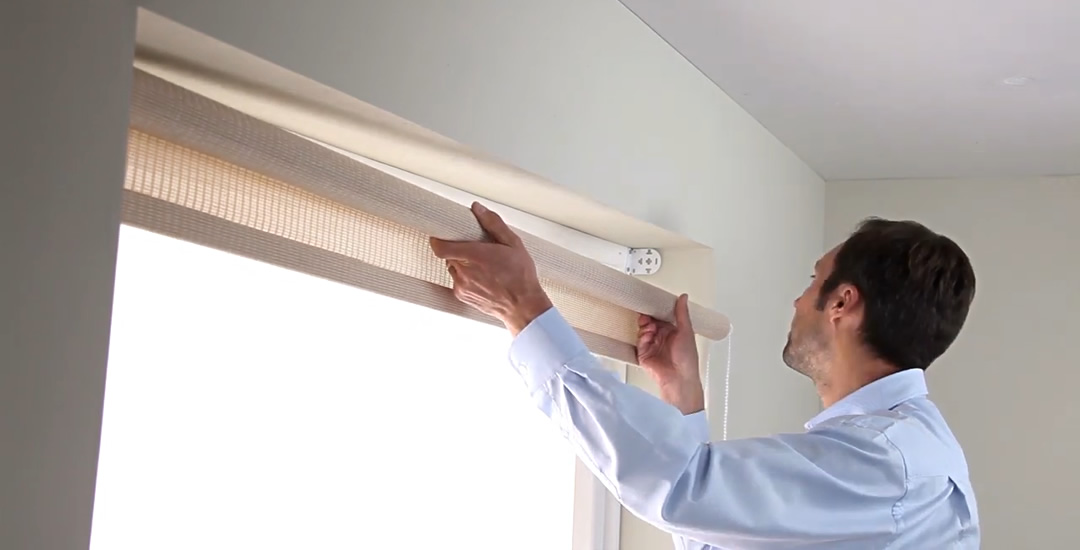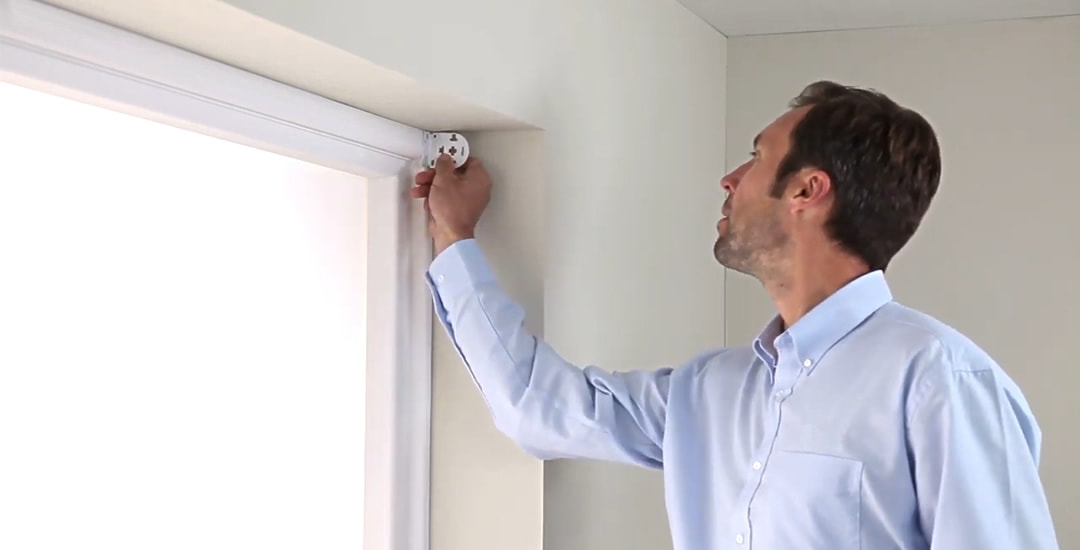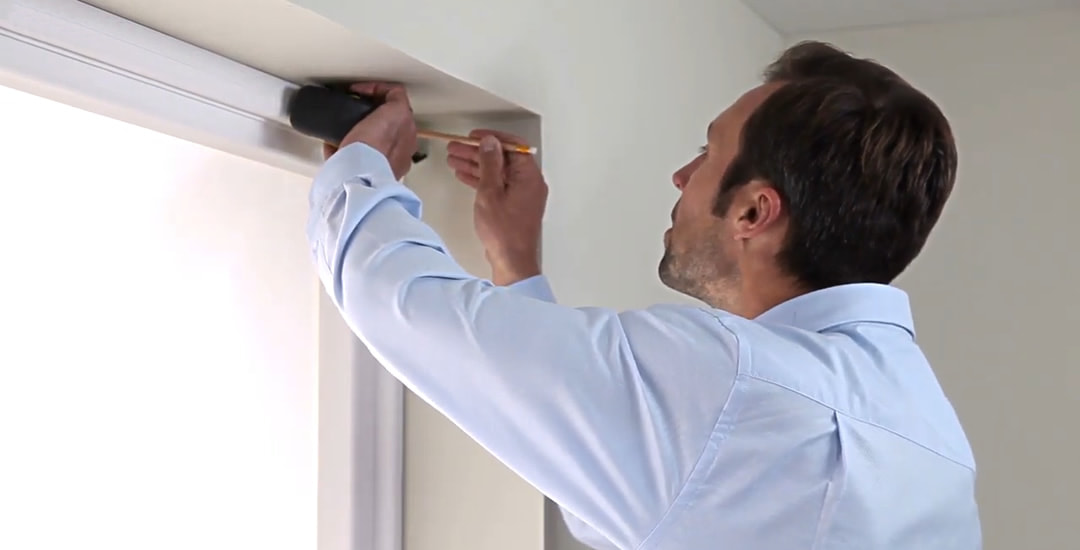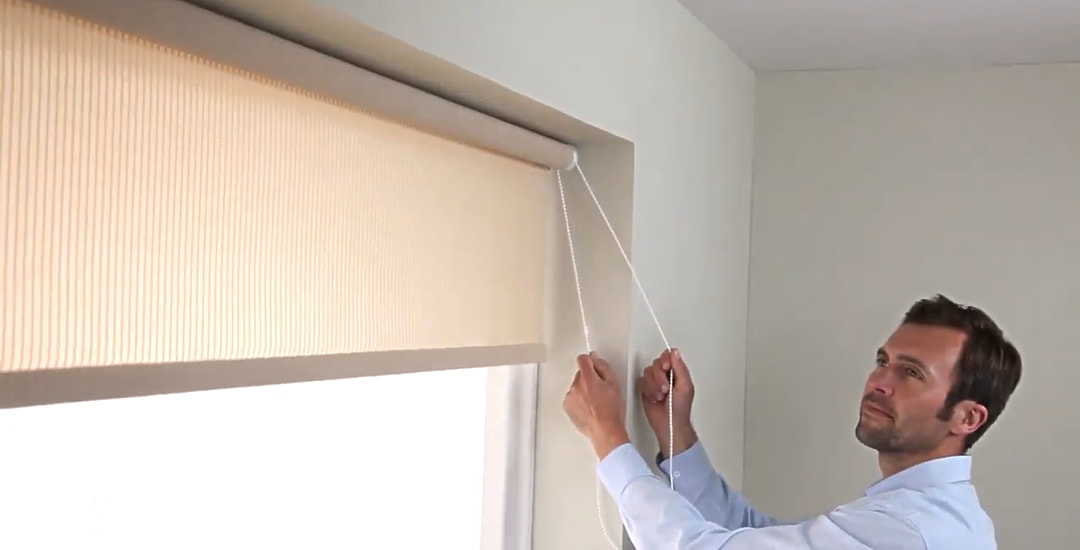
Are roller blinds easy to fit? Yes, they’re the easiest type of blinds to fit overall, although it does need to be said that there aren’t any types of blinds that are difficult to fit as long as they come with good instructions.
This is often the crux of the matter, and something you may already be aware of if you’ve run into difficulties of any kind trying to fit blinds before.
Fitting a roller blind is a very simple process, but if your blind doesn’t come with instructions or worse, comes with the sort of instructions that clearly started life in another language before being spun through a translation tool and spat out as word salad in which the actual meaning is unintelligible, it is understandable that you might be put off having another go in future!
Whether you’re looking to buy (and so, fit) a new roller blind from scratch with no prior experience, have fallen foul of dodgy instructions in the past, or have some uncertainty over the skill level (and type of tools) required for the job, this blog post is for you.
Read on and I will tell you exactly how and why fitting a roller blind is so simple, and what you need to know and to do in order to hang one.
Why are roller blinds easy to fit?

What makes roller blinds the easiest type of blinds to fit then? Basically, this comes down to their simplicity. To attach roller blinds to the wall, you just need to screw up two brackets; and these are known as universal brackets, which means that whichever position you want to fix your blinds in, the same brackets do it all.
Roller blind brackets fitted inside of the window recess can either be face fixed (fitted directly to the window frame), top fixed (fitted to the top of the window recess), or side fixed, which means attaching the bracket to the sides of the recess. For outside/over the recess fitting, you can attach the brackets to either the wall either side of the top of the window, or on the ceiling if you wish, although this is less common. Whichever way you go, you use the same brackets for each approach.
Roller blinds are the lightest weight blinds type overall too, which means that even in larger sizes they’re not overly challenging to handle; very wide roller blinds might be slightly unwieldy, but their weight is unlikely to become a problem for one person to lift safely and comfortably on their own.
Also, you only need very simple tools to fit roller blinds, and roller blind fitting instructions are (or should be!) very basic and virtually impossible to misinterpret.
Are roller blinds easy to install compared to other types of blinds?
First up, fitting window blinds of any type should be relatively simple. That said, roller blinds are definitely easier/more straightforward to fit than any other type of blinds.
Hanging roller blinds basically just means drilling a few holes and screwing the supplied brackets for the blind into them; while for vertical blinds, you need to fit the brackets and headrail, then hang each individual blind louvre to the headrail hooks, slide weights into the bottom of each louvre, and then connect the whole array with the supplied chain. If you’re thinking that this doesn’t exactly sound like rocket science either, then you’d be right; but it can be a little more fiddly, and definitely more time consuming.
To fit both Roman blinds and all three types of Venetian blinds (aluminium, wood, and faux-wood respectively) you will probably need to fit more than two brackets for all but fairly small blinds. Again, this isn’t hard, it just takes a little longer.
The other point to bear in mind with blinds of these types is that with the possible exception of smaller aluminium Venetian blinds, such blinds tend to be heavy, and so you may need help to support the weight of the blind itself when you hang or locate it in its brackets.
Are roller blinds easy to fit with basic tools?

Are roller blinds easy to fit with basic tools? Yes, and there’s a 99% certainty that you have all of these tools already. If you don’t, they can all quite literally be picked up from the local branch of Poundland with one exception, this latter being a drill; which Argos can certainly sort you out with if you’re not on good enough terms with the neighbours to ask to borrow one.
The tools you need to fit roller blinds are just a tape measure, a screwdriver, a pencil, a drill, and a spirit level, and this latter doesn’t even need to be a physical tool as you can actually get spirt level apps for smartphones!
How long does it take to fit roller blinds?

This sort of depends on how many times you go over the instructions and how fast you work; but assuming that the spot you want to hang your blind in is fairly accessible and you have all of the required tools to hand, you could quite feasibly hang a roller blind in under 15-20 minutes from start to finish depending on your DIY experience, possibly faster when you’ve already done a couple and don’t need to refer back to the instructions as you go along.
How do I fit roller blinds?
We’ve written a comprehensive but easy to follow guide (complete with diagrams) on how to fit roller blinds here. Obviously, every different roller blind retailer will provide slightly different directions, some of which may be more convoluted than others; but the basic principles of installing roller blinds remain the same across the board.
To summarise, position the brackets where they’re going to be fixed. Check they’re level with each other using the spirit level. Use the pencil to mark the holes for the screws and drill the bracket holes.
Then, screw the brackets up and locate the tube of the blind into the brackets. That’s the functional part done; all you need to do then (if required for the type of roller blind you’ve bought) is to screw the supplied P-clip that comes with certain types of roller blinds to the side of the recess to secure the operating chain safely out of the reach of children.
Doing this will ensure that your roller blind is both child safe and compliant with the relevant laws and British Standards regulations on window blinds and child safety; but if your roller blind is one of the type that does need to have a P-clip fitted, please don’t neglect to do this and call it good, as your window blind will only be legally compliant and of course, safe, once this has been done.




